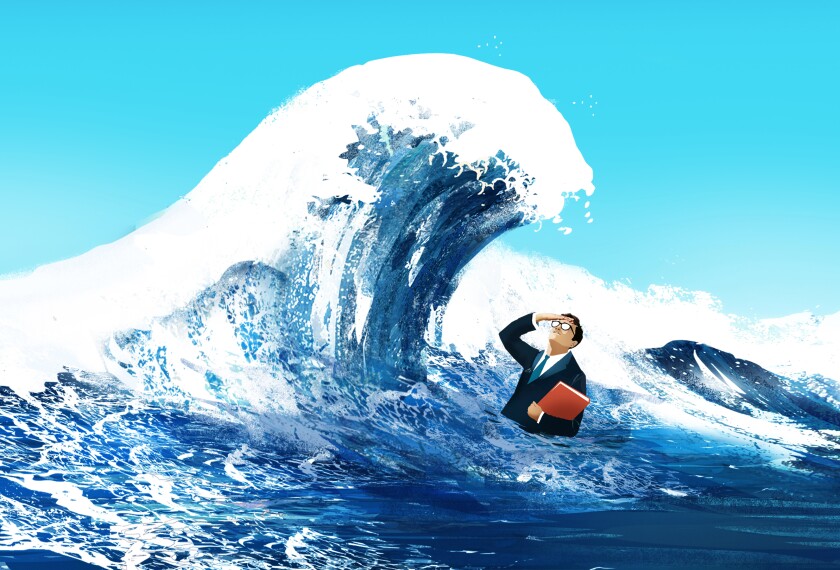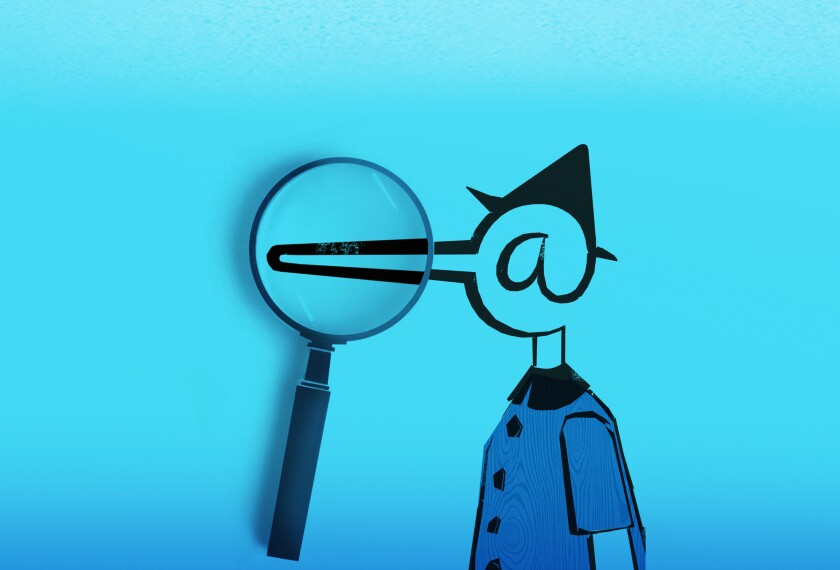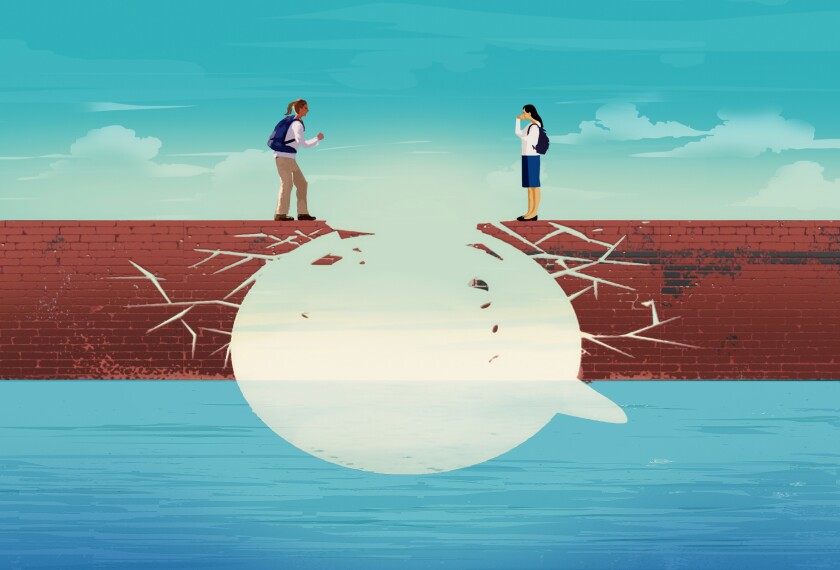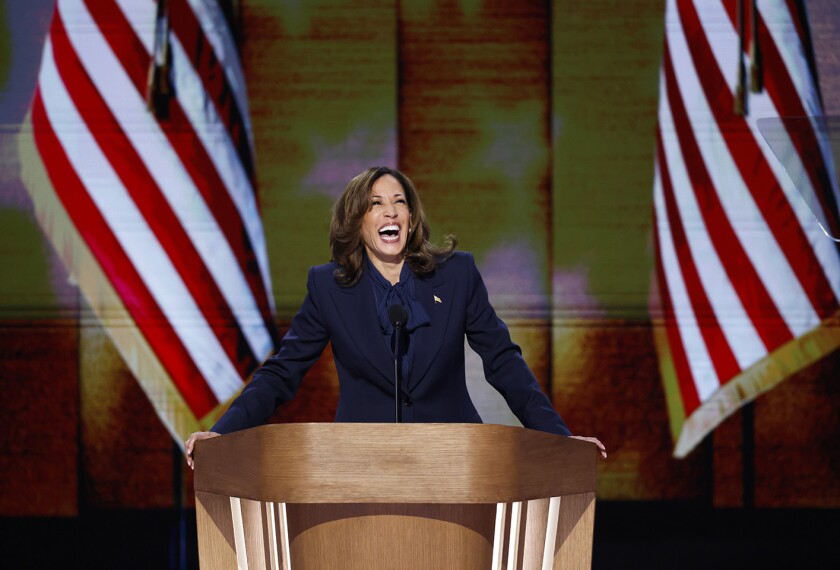When I reported on how schools were handling the Israel-Hamas war following the Oct. 7 attack, many educators I reached out to said they weren’t comfortable being on the record about whether and how they were talking about the war in their classrooms.
When I reported on how school-based health-care professionals are supporting LGBTQ+ students in an era when more lawmakers have curtailed how gender identity can be discussed, they said it’s like “walking on eggshells” to try to support students while keeping their jobs.
When I interviewed a high school environmental science teacher in North Carolina about how she teaches media literacy skills to her students, she said she doesn’t start with a topic like climate change because she knows it sparks controversy.
Even for someone like me, who’s been watching education news since my journalism career began in 2018, it seems as if suddenly what’s happening in schools is receiving outsized attention from politicians and the media, and the work of educators is becoming ever more visible. Reports of unruly school board meetings, protests over curricula, and lawsuits against district policies have been making regular appearances in the media. It feels as if every stakeholder—from school leaders to teachers, to parents, to students, to policymakers—is at odds.
Americans are divided about public-policy issues, they feel negatively toward people in the opposing political party and rarely spend time with those who think differently, according to the political scientists and historians I talked to. Survey data back this up. For instance, a 2024 analysis of Gallup poll data shows that political polarization among Republicans and Democrats has widened over the last two decades.
We’ve been here before
Though it might feel to you as well as if the polarization we’re experiencing is in overdrive, this isn’t the first time the United States has experienced deep division. In fact, it’s integral to our history—and most, if not all, of these tense periods reached education. In my conversations with political scientists and historians, they isolated several periods in the 20th century when our country was divided.
The U.S. Civil War, of course, is the example most people point to when they think of a split nation. If students were in school during the war—and many were not because they were either enslaved or didn’t have access to school, especially in the South—what they were being taught about the war, for example, depended on whether they were in the Union or the Confederacy.
The Red Scare of the late 1940s and early 1950s triggered anti-communist panic and paranoia across every corner of the country, including in schools. Among those looking over their shoulder were teachers who were interrogated over their alleged communist beliefs and pressured to reveal colleagues who espoused the same.
In 1954, the Brown v. Board of Education Supreme Court case was a catalyst for the Civil Rights Movement. Even so, the American public was injuriously divided over equal protection under the law for African Americans, bringing ugly, often violent, fights over desegregation to schoolhouse doors.
The Vietnam War (1955-1975) spurred the yearslong anti-war movement that engulfed college campuses (think: Kent State) and high schools. Often called “the first television war,” the conflict was mediated through the small screen, delivering graphic images to our living rooms nightly. (By the mid-1960s, nearly every home had a television.)
In 1971, two years before the United States ended its direct involvement in the Vietnam conflict by pulling out the last of its combat troops, public sentiment for the war shifted from positive to negative: According to a Gallup poll conducted in January 1971, only 31 percent of Americans thought it wasn’t a mistake to send troops, coinciding with the increased broadcasting of disturbing images of the war.
Three years earlier, in 1968, in his remarks to the National Association of Broadcasters in which he called on the media to guard against “the spirit of faction, against … divisiveness … , against the corrupting evils of partisanship… ,” President Lyndon B. Johnson expressed concerns about the impact the nightly news was having on public opinion. The “electronic media,” he said, has “added immeasurably to man’s power,” but it has “not cleared away all of the problems that we still have of communications. In some ways ... it has complicated them.” (His remarks are chillingly prescient if we think about social media’s impact on polarization today.)
Our media and information landscape operates (somewhat) differently now. During the Vietnam War era, Americans generally received news and information from the same (mostly) credible sources—three television networks, their newspaper, and/or radio. (This is not to ignore the country’s history with yellow journalism or the ebb and flow of trust in credible information sources. See the RAND Corp.’s 2018 “Truth Decay” report for a researched history of the nation’s “disagreement over facts,” including during the 1960s and 1970s.) Today, the array of unchecked user-generated platforms, including YouTube, TikTok, Instagram, Facebook, Reddit, X (formerly Twitter), and podcasts are a dangerous gateway to misinformation.
While research shows that social media platforms are not the root causes of political polarization, research does show they exacerbate it. (Similarly, though not all historians believe that television divided the American public over the Vietnam War, it seems likely that the ubiquity of disturbing images influenced opinion.)
Social media and AI exacerbate polarization
What makes social media so addictive and dangerous is that it is designed to hook users and maximize their engagement for advertising revenue. It is not in the service of providing fact-checked information. Platforms are constantly adjusting their algorithms to bring in more dollars, flooding users’ feeds with the users’ own biases. (MIT Technology Review has compiled several visualizations that demonstrate just how divided we are, including on social media and how it creates vulnerability for foreign interests’ efforts to sow misinformation, further dividing us.)
Social media has also diminished the localism of any one issue, according to experts. Local controversies quickly become national conversations. If social media has the power to encourage divisions and can blow up even the smallest issues, this could spell trouble for schools. We’ve already seen how conflicts at local school board meetings can go viral.
So, my feeling that suddenly what’s happening in schools is receiving outsized attention is probably based on what my personal media and information landscape is feeding me, and perhaps that’s what your favorite news/social media platforms are feeding you, too.
There’s one more aspect of our current media landscape that is deeply concerning, though.
Generative artificial intelligence is now further complicating the landscape, making it easier to create and spread misinformation and exacerbate divisions. During testimony before a U.S. Senate AI insight forum last November, Jessica Brandt, then the policy director for the Artificial Intelligence and Emerging Technology Initiative at the Brookings Institution, said she was concerned that generative AI technologies could “stoke division,” “suppress votes,” “turbocharge propaganda,” and “seed nihilism about the existence of objective truth, thereby weakening democratic societies from within.”
The role schools can play in depolarizing
What does all this mean for schools?
We should be concerned that the field of education might not be in the strongest position to catch up with AI’s supercharged polarization force multiplier. How educators are currently addressing ideological and political polarization in their classrooms, schools, and districts, according to a recent EdWeek Research Center survey, reflects a concerning reality. More than a third of educators who responded to an open-ended survey question said that they either had no remedies for addressing polarization or just were avoiding political discussions and topics altogether in their districts, schools, or classrooms. None said that they were addressing AI’s influence, even though in response to a separate question 19 percent of educators noted that social media is the greatest contributor to polarization in their school or district.
Polarization in American history is nothing new. We know that. But throwing AI’s gas on the fire changes the calculus. Polarization could become an uncontrollable blaze. Fears of another civil war and the decline of democracy demonstrate this, a sense that polarization is so out of control that we might never be able to claw civility back.
Experts I talked to didn’t want to make predictions about where this is all headed, but they did agree that schools have a role to play countering polarization and ensuring a healthy democracy.
And here’s what I also heard: Schools should teach media literacy and critical-thinking skills so students can evaluate on their own any information they read or hear. Schools need to emphasize civics education; our future leaders and voters should have a common knowledge about the basics of the U.S. political system and democracy. Lastly, schools should develop students’ ability to engage with different perspectives. But this seems like it might be a steep hill to climb, especially when even the adults in the room are having a hard time engaging with different perspectives. EdWeek Research Center survey data show that more than 30 percent of teachers changed their approach to a lesson in the past year because they were concerned it could be controversial and result in complaints.
So yes, it might be difficult for schools to counter polarization in the current political climate that’s already scrutinizing public schools, but our democracy depends on it.
Disclaimer: The copyright of this article belongs to the original author. Reposting this article is solely for the purpose of information dissemination and does not constitute any investment advice. If there is any infringement, please contact us immediately. We will make corrections or deletions as necessary. Thank you.







